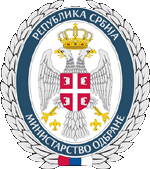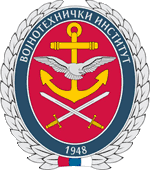|
REPUBLIC OF SERBIA MINISTRY OF DEFENCE
MINISTRY OF DEFENCE Material Resources Sector Defensive Technologies Department
|
COMPARATIVE ANALYSIS METHODOLOGY AND CHARACTERISTICS OF THE TRADITIONAL PCM DATA ACQUISITION SYSTEM AND THE NETWORK DATA ACQUISITION SYSTEM FOR AIRCRAFT TESTING
Sudan University of Science and Technology, Khartoum, Khartoum, sakhr.abudarag@sustech.edu ZORAN FILIPOVIĆ Institute GOSA, Belgrade,zoran.filipovic@institutgosa.rs DONIA MOHAMMED Sudan University of Science and Technology, Khartoum, doniasalih@gmail.com DRAGOLJUB VUJIĆ Military Technical Institute, Belgrade, dragoljub.vujic@vti.vs.rs
Abstract: This paper describes a general overview of the comparative methodology and characteristics of the traditional PCM Data Acquisition System and Data Acquisition system built upon networking principals. Design and implementation of the Flight Test Instrumentation Systems (FTI) is very important for successful evaluation the testing prototype of aircraft. The configuration of FTI System is based on the General Plan of Testing of any new aircraft (or significant improvement to an existing aircraft) . The system represents a fully integrated approach to flight test systems which addresses the end-to-end requirements from airborne data acquisition and real time flight monitoring through aircraft performance and stability/control analysis. The PCM Data Acquisition system is completely based on famous IRIG 106 PCM of acquisition & recording standard which is used primarily for military application. In recent years there has been a shift from PCM closed solutions for FTI networks towards more open standards-based systems using Ethernet technology. The trend towards Ethernet is further driven by the CTEIP (Central Test and Evaluation Investment Program-US DoD) Integrated Network Enhanced Telemetry (iNET) initiative. Keywords: Flight Test Instrumentation, Data Acquisition, PCM, Networking, iNET, IEEE-1588.
|
|||||
|
||||||

